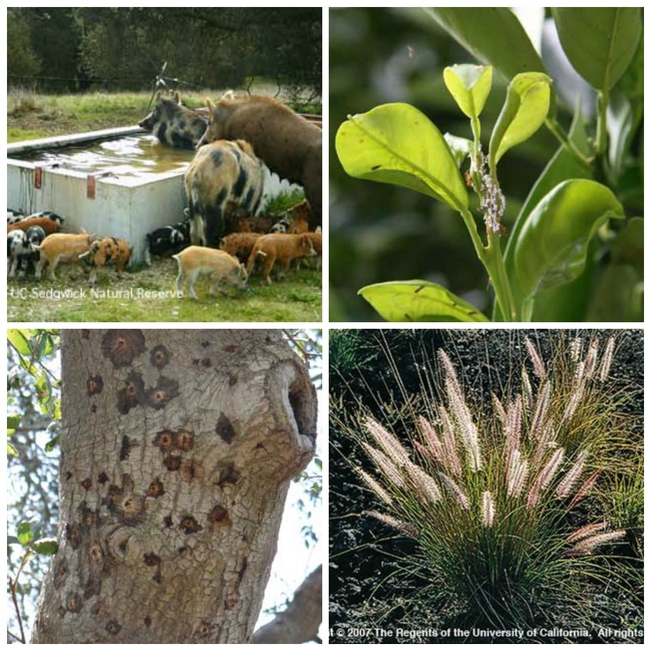Feb 26, 2017

Why should this matter to you? Every 60 days, our state gains a new and potentially damaging invasive species. Because the things you do can directly impact the environment and economy of California, here are the top 10 ways:
- Learn about the invasive species that live in your region. Check with your county agricultural extension office and the National Invasive Species Information Center.
- When you purchase plants at nurseries and garden centers, avoid buying invasive plants which may be for sale. Learn more from PlantRight.
- If you hike, clean off shoes before hiking in a new area to prevent weed seed or plant pathogen hitchhikers.
- Don't move firewood! Many pest insects and diseases can transported in firewood, so buy firewood when you get to your camping area. Learn more at Buy it Where You Burn It.
- If you have a boat, clean it thoroughly before transporting it to a different body of water to limit the movement of aquatic invasive species.
- Never transport illegal animals, plants or agricultural products when traveling to another state or country. Fill out customs declarations forms completely and honestly.
- If you have an aquarium, do not release fish, plants, live bait or other exotic animals into the wild. If you plan to own an exotic pet, do your research and make sure you can commit to looking after it carefully.
- Be aware of quarantines in your area for certain pests and don't move species from local quarantine zones to non-infested areas.
- Report invasive species to your local county agricultural commissioner office.
- Volunteer at a local park, refuge or other wildlife area to help remove invasive species.
Remember, YOU have a role to play in keeping invasive species from coming into California! For more information about invasive species, visit the UC IPM Exotic and Invasive Pests website , the UC Riverside Center for Invasive Species Research, or one of the links to other organizations above.